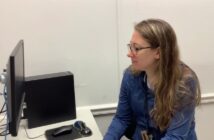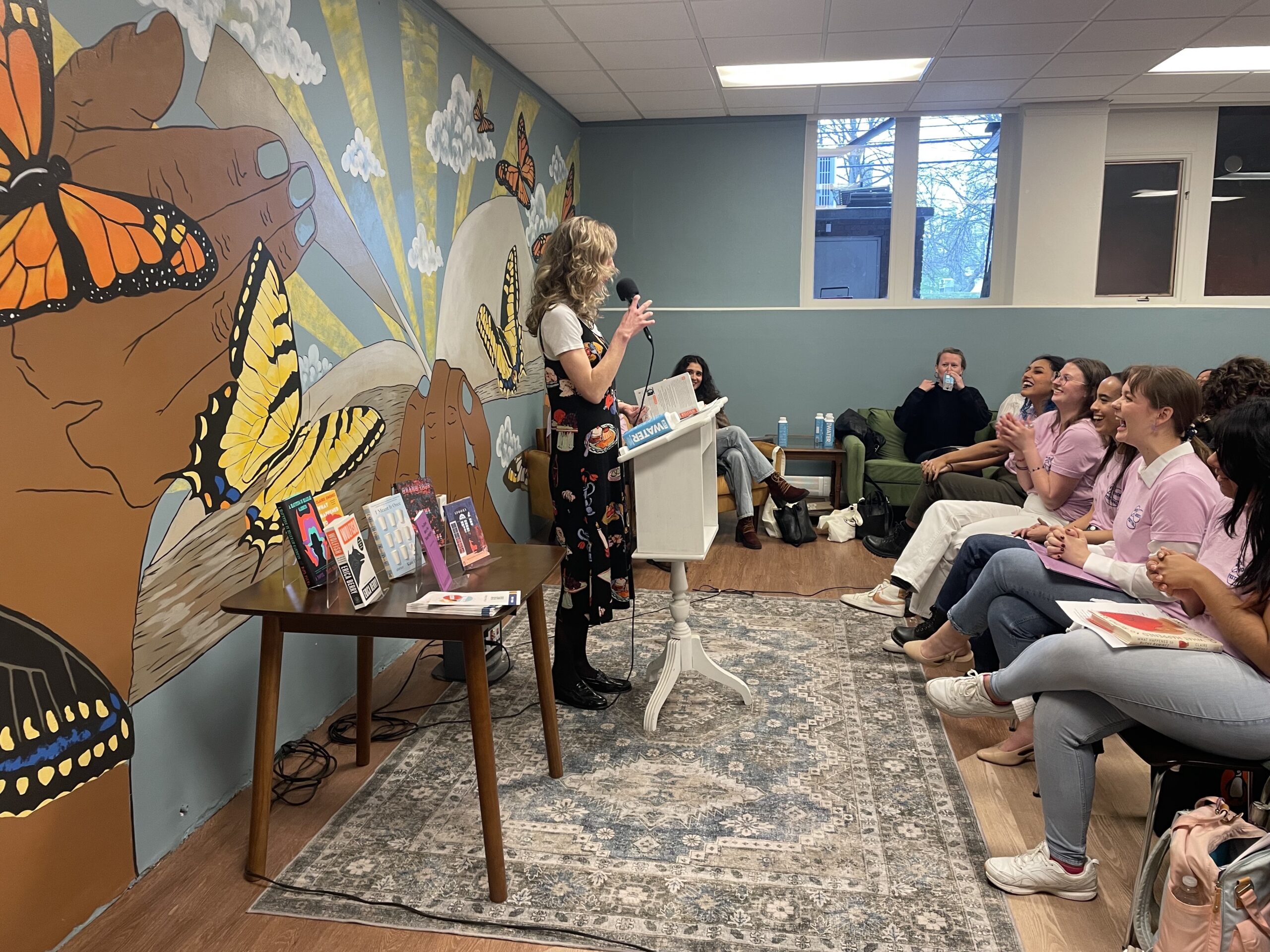
Gillis Lowry President of the Cornell Astronomical Society presents on telescopes. Linus Dentel/Ithaca Week
Observatory at Cornell makes public access a priority.
Every Friday evening the Fuertes Observatory on Cornell’s campus opens its doors to the public. On a clear night, Saturn, Jupiter and the moon are among the easiest to see from the observatory.
These planets are focused on by several telescopes meant to be looked through by anyone who chooses astronomy as their entertainment for the evening. The open house is held every Friday from 8 p.m. to midnight by the Cornell Astronomical Society.
The open house
During the academic year, the Fuertes Observatory is open Friday nights to the public and is free of charge. Located at 209 Cradit Farm Dr Ithaca, the observatory is somewhat hidden by surrounding trees. Just follow the path and walk to the opposite side of the building to find the entrance.
Regardless of clouds on any given Friday, the observatory remains open, honoring the 50-year tradition of public viewing nights. The large spherical roof that defines the observatory also known as the telescope dome is often opened prior to the open house. On any given Friday the observatory could see as little as 50 people to as many as 200 with lines wrapping around the outside of the building.

Full moon photographed on an iPhone through a telescope. (photo by Angie Gonzalez, taken on 9/29/23)
The Irving Porter Church Memorial Telescope
The main attraction at the Fuertes Observatory is The Irving Porter Church Telescope. When you reach the top of the stairs, a telescope roughly the length of a lamp post can be seen aimed at the night sky. This magnificent technology was officially mounted in 1922. The century-old telescope was a staple technology on Cornell’s campus in the 1920s and is arguably even more popular today.
In 1924, Samuel L. Boothroyd, Cornell professor of Civil Engineering and Astronomy said this about the telescope in a dedication, “The telescope is provided with a photographic correcting lens and with two cameras, one for taking photographs at the principal focus and one for use with amplifying lenses. The focal length of the objective is 180 inches and the two amplifying lenses give equivalent focal lengths of 5 and 10 times as great.”
Simply put, this telescope is a technology worth visiting. The fact we can see Saturn from the observatory, a planet that’s approximately 883 million miles away is astounding.

(CAS) member demonstrates how to use the Irving Porter Church Telescope. (photo by Linus Dentel/Ithaca Week)
The Cornell Astronomical Society
Gillis Lowry, president of the Cornell Astronomical Society (CAS) is a passionate advocate for the Fuertes Observatory. Lowry is one of many members involved with the Friday night crew making the amenities accessible to the public. “We show up typically 20 minutes beforehand, [and]take the tarp off our big telescope upstairs,” Lowry said. “Then we’re kind of ready to roll. The public comes in and we can walk them through the opening process, a lot of times they’re interested in watching us crack open the dome and set up the telescopes.”
CAS is free to join and meets every Saturday from 8 p.m. to 10 p.m. Outreach coordinator Ben Shapiro offers some insight on what it takes to join. “[its]completely free. There’s no application process. You show up, you come a lot, you’re a member.” Members can take part in the CAS lecture series as well as attend gatherings held by the society.
Astronomy; a lost art
Both the CAS president and outreach coordinator said that astronomy is a lost art. Shapiro cited light pollution and poor visibility of the night sky as the main reason the popularity of astronomy is in a slight decline. “In terms of astronomy, it really makes people, the public interest die out because they can’t wake up and go, Oh, what’s that? They don’t see anything. They don’t look up anymore,” Shapiro said.
Lowry also pointed out that the proper telescope technology is often hard to come by. “It’s a lost art in the sense that it’s never been super accessible to the average person when it comes to telescopes and advanced equipment. But the good thing is that if you have a means of getting out to a dark place, then you can do astronomy.”
Accessibility is the goal of the Fuertes Observatory and when it comes to astronomy they are ahead of the game. Lowry also encouraged getting to know the night sky without telescopes. “You can look up at the sky, you can look down at a star chart, try to figure out what you’re looking at, or you can download an app on your phone that will show you where things are in the sky,” Lowry said. Every night planets, stars and nebulae are visible from Earth and places like the Fuertes Observatory allow for learning or more simply, enjoyment.



